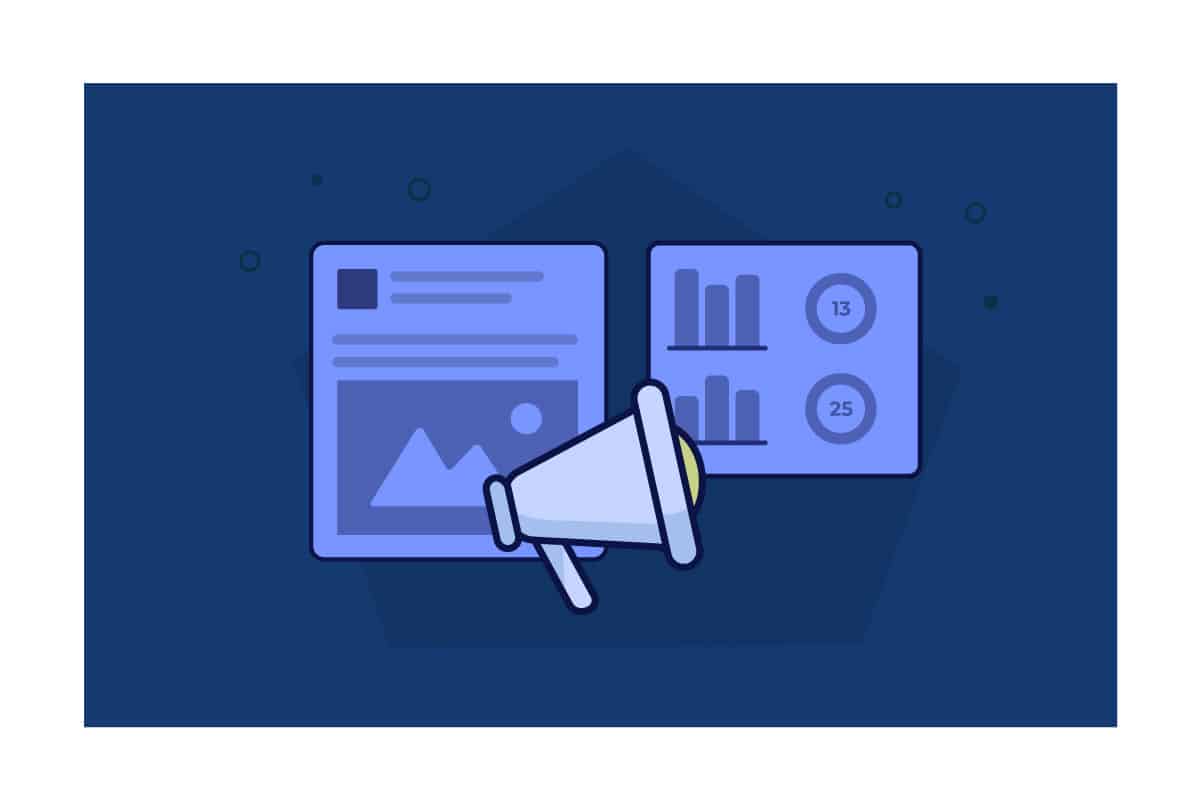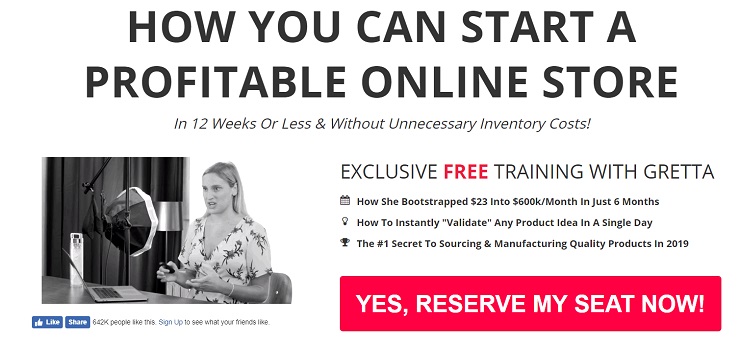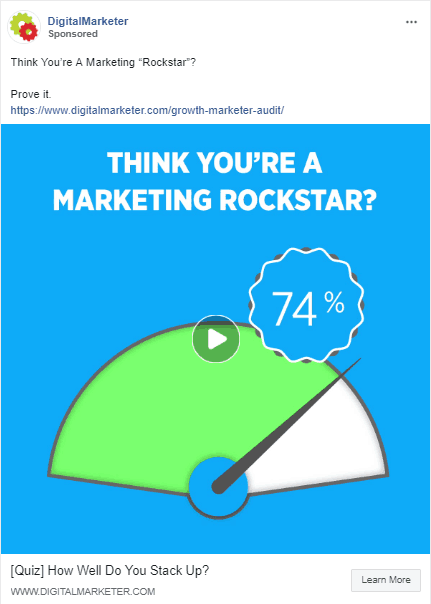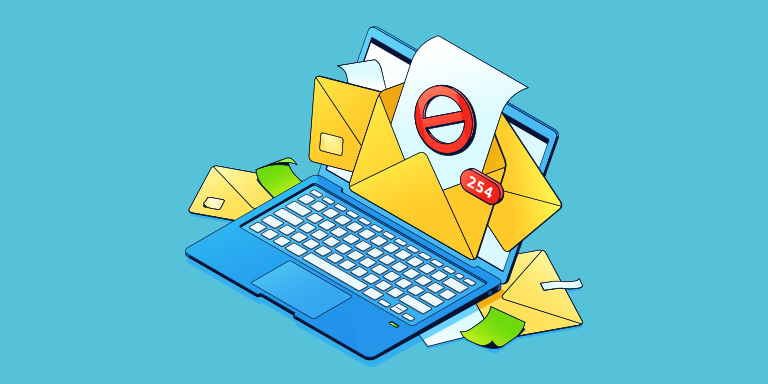Become a thought leader, they’ll tell you. Prove yourself a top thinker in your space, write lots of that juicy SEO-optimized content, and not only will you get a flood of organic traffic, you’ll practically be buried in leads. Easy.
Except that advice might be a few years too late for people just getting into the game. For those in even a moderately crowded niche, there is already so much content out there these days. And yes, a lot of it is very good, which means even if you’re writing gospel, very few people are likely to even see it. As for SEO and traffic, your predecessors have had years to publish content and shore up their rankings. You probably haven’t.
The sad fact is this: showing that you’re an expert simply ain’t good enough anymore. Luckily, there’s Facebook.
Smart Facebook Advertising Can Inject Fuel Into Your Lead Funnel Like Nothing Else
Take Hubspot, for instance, which grew to fame using one of the world’s most successful digital content strategies.
Yeah, it’s a SaaS company, not a consultancy. But consider their market. It’s probably pretty close to yours—businesses and entrepreneurs, with lead cycles measured in weeks and months, if not years. What works for them will generally work for you.
Hubspot grew to $513 million in revenue in 2018, and practically built its business on inbound marketing. The team followed the traditional approach, sure, writing lots of great content to build SEO traction.
But Hubspot also created a ton of lead magnets: guides, templates, and ebooks, which the company advertises on Facebook, both to targeted audiences and followers. All they ask for is your info:

Hubspot isn’t the only B2B business using these tactics. Everyone from Gary Vaynerchuk to McKinsey uses Facebook to get subscribers at a very early stage in the sales funnel, before eventually shifting them to leads by building up a perception of expertise.
So why Facebook? Because while there are other excellent ways of getting consulting clients, Facebook has one of the most sophisticated methods of identifying and engaging your target audience. And it tends to be one of the most cost-effective ways of doing so. Here’s how you get started.
The Tactics Will Vary, But It Only Takes 3 Steps
Looking at just how well some established players use this strategy can be intimidating, some with hundreds of different lead magnets and automated email sequences with dozens of emails.
You don’t need all that. At least, not to start. The overall strategy is the same:
1. Use Facebook ads to collect contact information from people who are good targets to become your clients.
2: Engage with them to build their perception of your expertise via email.
3: Move those that are more engaged into a separate funnel where you begin turning them into true leads, rather than just email subscribers.
Of course, how you do any of those things can make or break the results. For the purposes of this article, we’re not going to go into the technicalities of how to set up ads on Facebook (we have a good guide on that here). Rather, we’ll instead talk about what you need to pay attention to when it comes to Facebook marketing for consultants.
Step 1: Identify Your Audience. Provide Value. Get Their Information.
Now, when we’re talking about identifying your audience, we’re not talking about creating a persona of your ideal client. You should already know who would be the most interested in the services you offer. If you don’t, you don’t have even a chance of engaging them.
Rather, we’re talking about how to “line up” your ideal audience with the actual people seeing your ads on Facebook. The platform allows you to segment by interest, age, sex, buying behaviors, devices, and so on. The more you know about your audience, the better and more accurate your appeals to them are going to be. You can be very, very specific. If you’re just getting started, you want to aim for a “potential audience size” of no more than several hundred thousand.
Getting into the millions means your audience is too broad, and you can probably narrow down further for better results. You want to get as narrow as possible. This will not only increase clickthrough, but also conversions on your landing page. Ideally, you will be testing several different campaigns with different targeted audiences.
For instance, if you were a marketing consultant, you could target entrepreneurs who show interest in landing pages, conversion optimization, email marketing, and PR tactics. When it comes to Facebook marketing for consultants, the more targeted, the better.
If you don’t know the exact makeup of who you’re trying to reach, make an educated guess—you can always test later. Doing this step properly, targeting the right people, is the prerequisite to the core of the first step.
Provide Value: You Need Them to Remember You. The ‘How’ Is Less Important
This is where it starts to get tricky, because you’re completely spoiled for choice. Depending on your client profile and your specialties, there are dozens of ways to reach your audience. Do you run webinars? Go the ol’ whitepaper and ebook route? Perhaps you should do a podcast?
Look, not all of these are going to work for you. But here’s a rule of thumb: start with one thing, and make sure you have a decent shot of knocking it out of the park. If you’re planning to do a podcast, you better make sure you can make one of the best darn podcasts in your niche. Check your competition and see what you can actually add to the conversation.
A Note on Ebooks, Whitepapers, and Infographics
For years, these were the go-to lead magnets for pretty much everyone out there. Even today, it’d be surprising to visit five random sites and not find a whitepaper or free report being offered in a conveniently placed pop-up.
Despite their prevalence, they can still work if you create content that’s interesting, meaningful, and has practical tips for the people reading it. Don’t just try to combine a bunch of old blog posts into a Frankenstein of a report. If you don’t want your content to rot in the inbox, tell them new things that make them think “Aha!”
We’ll cover some more lead offer ideas later in this section.
Get Their Information: Pick the Right Advertising Method
Regardless of the offering, the way you use them is the same. Build some ads aimed at targeted audiences. Send visitors to a short landing page. Get their info.
You have two options. You can use Facebook’s official ad platform, or create a post on your Facebook business page and “promote” it. The former comes with greater analytics and more sophisticated functionality. The latter comes with fewer restrictions on what you actually put in the ad. Both tend to have similar levels of performance per dollar, in my experience. My personal preference for lead magnets is using promoted posts, mainly because you don’t have a 90-character ceiling for copy.
That means you not only have more words to convince people to click the link, but also to convince them why clicking that link might be one of the best decisions of their lives. Long Facebook ad copy works when done right.
Use Separate Landing Pages (Always)
Note that while Facebook itself has a built-in offer form that you can immediately send people to, it’s usually a terrible idea to do so. Sure, it’s way easier than making a landing page. It’s also going to get you terrible leads. As a consultant, you know that the quality of your prospects matters.
You’ll want your ads to go to a separate landing page, complete with tracking. I recommend using a simple landing page builder like Instapage or Leadpages. Not only do they have excellent templates, you don’t need to be an expert to build your own pages. They don’t need to be fancy, just effective.
The biggest mistake people make when doing this is thinking that collecting email addresses is enough. Far from it.
Filling out a form is easy, it requires five seconds and not much else. If you don’t sufficiently build up the value of what prospects are going to receive, you can bet they’re not going to read that ebook you send them or the emails you will follow up with.
That means you might end up with a lot of submissions and very few good prospects down the line. Make them understand that they’re getting something incredible for free, and continue to build that impression in that initial contact.
One way to do this is to list bullets on the landing page that detail what the prospect is going to receive if they opt in:
Oh, and if you’re using something downloadable as your lead magnet, never put it as an actual download on the landing page itself. Either put the attachment or a link in that first email. This will ensure they must have a valid email address to get the value you offer, and get them used to opening your emails.
Tools, Calculators, Templates—and How to Advertise Them on Facebook
While great content can build your reputation as an expert and deliver you quality prospects, sometimes you need volume. A lot of business people will read your content and go on to become great clients, but others simply won’t have the time or the desire. If you need to cast a wider net, look to practical tools that someone might need to use now.
Templates for emails an executive might need to write, a headline generator for press releases, a quiz that can give someone insight into their own business—these have impact and will get you a higher quantity of subscribers, fast. And there are many, many more where that came from.
There is one caveat when offering tools. If you have a static piece of downloadable content, like templates, the method of offering them is identical to using a lead magnet like an ebook. Same kind of ads, same kind of landing pages.
But if you’ve developed a quiz, calculator, or generator, something people actually have to use, then you need to take a different tack. While you might still want to sell the tool on a landing page, especially if it’s something that takes longer to get through like the marketing assessment test below, in most cases you can probably make your landing page the tool itself.
The only question then is when you ask for an email address. There are two schools of thought here—ask for it before or after they use it. I’m in the latter camp. Yes, you’ll get fewer people to actually sign up for the email list, but you’ll be sure they actually care about what you have to say.
One thing to keep in mind is that the subscribers you get using that method are going to be far harder to convert into actual leads than other methods. They mainly signed up because they had a practical use for something you offered them, after all, not because they were necessarily interested in your expertise. That said, if you offer a truly compelling and necessary tool you can acquire tens of thousands of subscribers, or more.
Webinars and How to Advertise Them on Facebook.
Webinars are utterly superb marketing tools for consultancies, mainly because they give you a chance to showcase your expertise to a smaller, more engaged, and qualified audience. But you need to do it right.
The second biggest fear of any webinar host is an empty room. The first is to have single digit attendance, which means you can’t even cancel. Paid ads on Facebook are one of the best ways to make sure this nightmare scenario doesn’t materialize.
It does take more than just an ad, however. It goes without saying that you have to create a killer webinar, with a unique and magnetic topic. A well-known speaker, or failing that, a funny one. Making it easy to sign up and attend is a given (Facebook even has its own webinar service you can use). Here are some expert tips for creating growth-accelerating webinars. You also need to promote the heck out of it.
There is one big thing you need to keep in mind when it comes to webinars and Facebook though. Webinars Attract A Different Audience.
There’s nothing specifically different when it comes to advertising webinars versus other lead magnets. You can follow the same style of ads you’d normally use, and the same style of landing page.
Here’s what is different. Webinars attract lower numbers of higher quality leads than other magnets. They’ve made higher commitments and will directly interact with you. What that means is that you don’t want to put webinar attendees into your normal email list like everyone else. That would be a waste of the effort you spent in getting them.
Rather, not only might you try to directly turn some of the more highly-engaged attendees into leads directly, you’ll also want to move all the other ones into a different list than the methods above. They are further along the lead funnel than the rest, so treat them accordingly.
Ask for Everything Upfront
Ah, the old dilemma of what to ask for on lead forms. Regardless of which of the above methods you use to get subscribers, every field you add to a lead form significantly decreases the chances that someone is actually going to fill it out (though not always). Generally, the lower the effort required, the more submissions you’re going to get.
But that’s not always a good thing. Low-effort submissions mean minimally engaged prospects, which means you’ll have to work much, much harder to turn them into leads, eventually. Personally, I prefer asking for all of the relevant information you’d need to know from a good prospect, even if it decreases the number of submissions.
Just a name and email simply don’t have much value if you want to get good clients out of targeted ads. When it comes to Facebook marketing for consultants, knowing company size, role, and other info can help you decide whether you’re targeting the right audience or you’ve completely missed the ball.
That’s why it’s SO critical that you have a powerful offer in your lead magnet. The more value people perceive in the offer, the more time they’ll be willing to invest in filling something out. And having more information on who you’re talking to comes in handy in the next step.
Step 2: Talk to Them and Stay in Touch
At this point, you’ve got an email address, and hopefully some other relevant information, so you know exactly who you’re talking to. Now, it’s time to really engage with your subscribers.
Regardless of how they found their way onto your list, it’s unlikely they’re in the right state of mind to immediately turn into a lead. Rather, for the vast majority of your subscribers, now is the time to build up your reputation in their minds and make them realize that yes, you are an expert with advice that will materially benefit their businesses.
So your first email is important. Really important. It’s your first “one-on-one” interaction with your subscriber. Granted, this should all be automated (top tools for that here). Your first email should automatically trigger a few minutes after they sign up. But that doesn’t mean that initial content can’t be relevant, personal, and meaningful. Check out Derek Halpern’s first email below:
Not only does it remind you why you were interested in that lead magnet in the first place, but it also reinforces his credentials as an expert, builds rapport with its casual tone, and tells you exactly what you’ll get if you stay subscribed to the email list. And it works.
Say something different. If you really want to be fancy, you can create different sequences to trigger based on the lead magnet they downloaded or the information they filled out on the lead form. Or you could ask a question. The below email from Groove famously got a 41% response rate.
How to Keep Them Engaged and Get Them More Invested in You
When you’re designing your email sequences, you’ll want to ask yourself: What can you say in your emails that will make your subscribers actually look forward to hearing from you? Think about the service you offer and how it provides noticeable benefits to your clients. How can you break down pieces of that service and offer those in your emails?
For instance, imagine you were a sales consultant, with the know-how to help businesses get better results from their sales people. Your process when beginning to work with a client might be: collect information about their current practices, run them through your own analysis and identify weaknesses/possible improvements, then work with the sales team to address them.
So for an email sequence, there are a few things you could do. You could talk about problems and the solutions you provided for previous clients you’ve worked with—unique stories nobody else on the planet can replicate, and something your subscribers could learn from. You could break down your own analysis process and teach people how to do their own analyses of their weaknesses/opportunities. You could talk about how you improve the performance of salespeople, after you’ve decided on a strategy.
Whether it’s advice, more lead magnets, video lessons, or something else, you need to give your subscribers a really good reason to pay attention to every email you send, and you need to make sure they understand that this is stuff they would be willing to actually pay for. Plus, a few extra tips for maximizing email engagement here.
You’ll want a higher frequency of emails when they first sign up to your list, as that’s the moment they are most engaged and willing to hear from you. That said, prioritize quality over quantity. Everyone already has too much junk stuffing their inboxes, and their instinctual reaction to any email is to not read it. Don’t make your job any harder by diluting what you can offer.
But if you can maintain quality, you can send emails daily for the first week they sign up, then level out to every two days, then three. Fifteen emails in that first month is a good number to aim for. It might sound like too much, but I’ve never found a significant jump in unsubscribes compared to sending less frequently, and people who are heavily engaged in the beginning will want to hear from you.
Step 3: Turn Subscribers into Engaged Followers, and Engaged Followers into Leads
At this point, you’ll want to try turning a bunch of your subscribers into leads. But first, you’ll want to separate out the “warm” subscribers and the “cold” subscribers. Warm subscribers are ready to hear a sales pitch; cold subscribers are not.
Now, if your entire email database is a highly engaged audience that you know has a significant chance of hiring you, a “warm” audience, you can skip the section directly below. For instance, if all your subscribers came from webinars (a high commitment activity), they probably have much higher engagement than if they had simply downloaded a free ebook (a low commitment activity). In this case, you can move directly to turning your subscribers into leads.
Most people won’t be able to do that though, as they’re likely to cast a wider net when it comes to gathering emails. So in that list of subscribers, there will be a bunch of people who are barely engaged and need to be “warmed up” further to make them ready for a sales pitch. There are others that won’t, and will never, qualify as potential clients.
If you end up sending targeted sales appeals to your entire list, you’ll end up annoying a bunch of these people and causing them to unsubscribe, as your emails will not be relevant. We don’t want to do this, as these subscribers, even if they never turn into leads, can be extremely valuable to you. More on that later.
But basically, you’ll want to create a separate group within your subscriber base, usually called a “segment,” which you will essentially treat differently than normal subscribers. The emails that go to this segment will be different than the ones that go to your overall list. Each participant in this segment needs to fulfill two conditions.
A: It has to be a subscriber that has the potential to become an actual client.
B: The subscriber has to be fully engaged with your content.
You should be able to figure out who fulfills condition A simply by looking at the information they filled out during the email sign up, which is another reason it’s so important to ask for everything you need at the beginning. For condition B, you qualify who is engaged by sprinkling offers throughout your email sequences.
Gift cards. Contests. Tools, templates, webinars. Anything that you might’ve considered for a lead magnet on Facebook would also work here. The people who take you up on your offers are great prospects for you.
Getting Leads
Once you get these pre-qualified and engaged subscribers into this separate funnel, your next step will depend entirely on the number of potential clients and how much effort you can spare to focus on each. If you have a relatively small pool, you could personally reach out to each with a special offer. A marketing consultant might offer a free critique of a landing page, for instance. A leadership coach might offer a free consulting call.
Or you could take a more general approach, and simply write emails that have more sales-oriented offers, like a discount on your services. Basically, because you’ve already pre-qualified the audience, you can commit to higher-engagement activities that you simply can’t for a larger audience.
Whichever way you want to do it, this is where you’ll get the more value from your email subscribers. That said…
There are subscribers who will never make it into this group. And that’s fine.
Many simply won’t be qualified. In fact, the vast majority of those who sign up for your emails may not be. No worries.
Not only will these people share your content with others who will be qualified, but you can also use their enthusiasm for your content in other ways. For instance, propagating your content and boosting the SEO value of your website. Or you can redirect them to your Facebook page whenever you have new content, or a new piece of material that you wish to test as a lead magnet.
When it comes to Facebook marketing for consultants, we need to think of context. Facebook is inherently a social platform, and the more engagement you have on Facebook, whether on your business page or on your promoted posts, the more effective everything you do on the platform will be.
If This Sounds Like a lot of Work…
That’s because it is. That said, it’s still one of the easiest, fastest, and cheapest ways to build up leads. More importantly, this method is sustainable in the long term, and only becomes more powerful as you build up more subscribers and Facebook followers.
Plus, everything you do can be repurposed and used for other channels to build up the attractiveness of your services. Lead magnets can be offered to clients or put on your website to promote confidence. Email sequences can be used for organic traffic. Testing your ads and audiences will give you better insight into the pain points of your prospects.
Facebook can be a gold mine for your consultant business, if you’re willing to put in the effort. Practically every major consultant has gotten in on it. Will you?

























